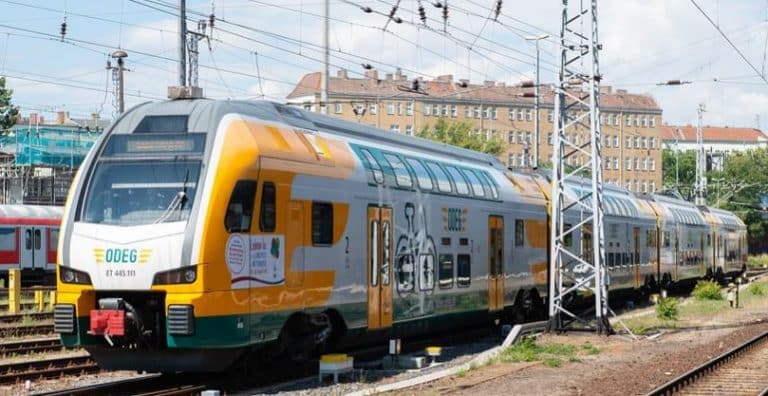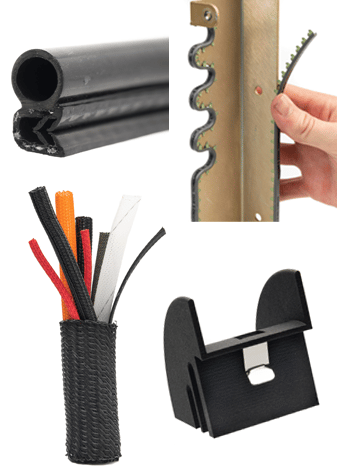The American Rescue Plan (ARP) 2021 gives funding for transit systems to implement critical infrastructure updates, secure planning, and design consultation services, and launch programs in the wake of the COVID-19 pandemic.
The ARP was signed into law on March 11, 2021, and includes $30.5 billion in federal funding to support the nation’s public transportation systems. It is much needed as they continue to respond to the COVID-19 pandemic and try and recover from dramatic declines in ridership and fare revenue.
The $30.5 billion in transit relief funds will be distributed as follows:
- $26.6 billion to urbanized, rural, and tribal areas
- $2.20 billion to Federal Transit Administration grant recipients with additional pandemic-related needs.
- $1.68 billion for projects in the Capital Investment Grants (CIG) Program
- $50 million for Enhanced Mobility of Seniors and Individuals with Disabilities
- $25 million for competitive planning grants
- $5 million for competitive tribal grants
It could not come at a better time as public transport is really at a crossroads with lots of decisions to make. How long will the pre-Covid levels of funding last for systems in the face of dramatically lower ridership?
Mass transit was hit hard by Covid because it is well… mass transit…with the emphasis on mass. People moving at scale relies on full buses, trains, and subways. Fear of infection and social distancing in particular threw a monkey wrench into these well-oiled machines.

How much of a wrench? Here is a sample of ridership data from 5 major cities for mid-2021 data vs. pre-Covid.
| CURRENT RIDERSHIP DECLINE | ||
|---|---|---|
| Washington DC | Metrorail | (85%) |
| San Antonio | VIA Metro | (50%) |
| Boston | MBTA | (70%) |
| San Francisco | MTA | (88%) |
| New York | MTA | (50%) |
There is no consolidated nationwide data but I think it’s reasonable to assume that most urban public transit has been hit hard with declines in this 50-88% range.
The differences are possibly due to the different levels of public transit dependence, although New York is a bit of a surprise but let’s face it, a 50% drop is still really bad even if it’s relatively “good”
Case in point: Michael Goldman, a metro DC board member gave this quite provocative quote “We cannot continue to operate a rail system at 15% of pre-COVID ridership levels… nor can we even be satisfied with a system that’s projected at 34% of pre-COVID levels by June 2022.”
What does that mean? It’s unlikely that public transit will be defunded but unless ridership bounces back clearly decisions will have to be made about services, staffing, coverage, and routes.
And to compound the complexity, the traditional peaks -aka rush hours- are smoothing out as employers move toward flexible working hours and hybrid office/home working.
The ARP’s Role
Enter the ARP. With public and political pressure to rebuild “better than before”, how do transit systems build back in the face of these declines?
A key challenge for transit systems is how to prioritize the use of ARP funds which means they will have to have a clear idea of what their goals are -which will of course vary by region. That task is clearly not as easy as it looks but it is imperative.
There is a myriad of options: is it provisioning more people, buses, trains across the whole day, right-sizing your fleet, balancing high medium and low traffic routes, pricing models, later opening, or cheaper fares?
Even before they make those choices they will likely be looking for help on simulating scenarios so they can plan with that data in mind. It’s likely everything will be on the table. The bias must be toward action – seeing what works and sourcing the available ARP funds to help boost those initiatives.
The big question is will ridership rebound? Some believe it will as vaccines and vaccine mandates come into play but that the rebound will be somewhere around the 70% of pre-Covid levels principally because of the changes being made to hybrid and fully remote work. That still has to play out and nobody knows for sure. However, planners, buyers, and operators have to put plans in place now.
I believe several elements will be paramount:
- Building out critical employee and rider safety programs
- Adapting services to current ridership while at the same time looking at ways to grow back
- Capturing ARP funds available to dovetail with and boost local funding programs
- Balancing out asset provisioning as the peaks smooth out
- Squeezing costs out of the system in any way they can – as funding gets tighter.
Net Effect
This will push systems toward better route planning and balancing and likely a better interaction between the different types of transportation: rail, buses, bikes, etc.
With the clear budget and funding challenges, transit systems will need to find cost savings and efficiency –for new equipment or repairs. They will be pushing suppliers for better prices. This will have a knock-on effect on the supply chain. Everyone will be looking for every ounce of savings and efficiency they can squeeze out while always keeping an eye on safety. Products will have to be effective and cost-effective.
How DTi can help
DTi supplies components to the systems to make the transport vehicles and the supporting infrastructure. We supply grommet edging, seals, trim, and cable waterfalls that can create savings and efficiencies in their manufacturing processes.
For instance, OEM’s can cut one component cost in half with Spring-Fast® Grommet Edging as it protects wires and cables from chafing and arcing with best in class performance, a snap-on installation that lowers costs 49% vs. grommets with glue and improves efficiency 9.5x – due to fewer steps in the workflow.
Seal-Fast Edge Seals offer a cleaner, better faster way to protect your data, services, and equipment
from environmental conditions such as dust, fumes, heat/cold, and moisture. Edge seals snap on quickly and securely, and the plate seal fastens securely for an effective seal solution.
For more information on Spring-Fast® Grommet Edging go here
For more information on seals go here
See for yourself Get free samples go here

